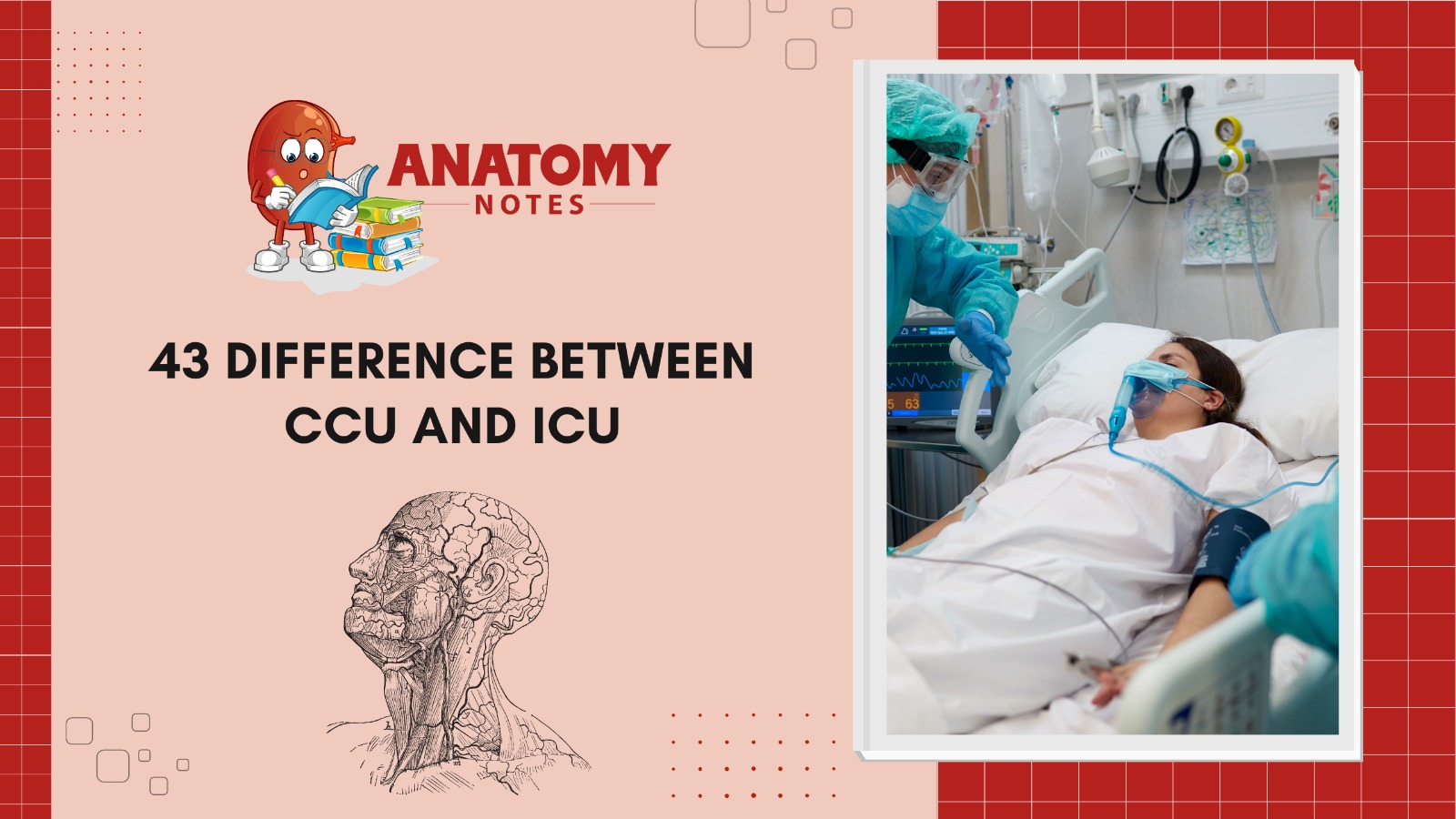In critical care medicine, the Coronary Care Unit (CCU) and Intensive Care Unit (ICU) care for life-threatening patients. They serve various medical requirements yet perform some of the same things. This article will summarize the most significant CCU-ICU modifications.
The Coronary Care Unit (CCU) of a hospital diagnoses and treats significant cardiac conditions, notably coronary artery disease. Chest discomfort, heart attacks, acute heart failure, and irregular heartbeats are common CCU admissions. Modern cardiac monitoring equipment in the CCU tracks electrocardiograms (ECGs), blood pressure, and other vital indicators. Cardiologists, cardiac nurses, and other heart experts staff the CCU. CCU treatment aims to relax patients, treat cardiac issues, and prevent heart damage.
The hospital’s Intensive Care Unit (ICU) treats a larger range of critically ill patients. These individuals may need ongoing medical, surgical, or trauma treatment. Intensivists, critical care nurses, respiratory therapists, and other professionals provide patient-specific care in the ICU. Breathing failure, infections, multiple organ failure, and post-surgery care are treated in the ICU using improved life support systems, ventilators, and tracking technologies.
Where CCU and ICU focus is the primary difference. The ICU treats a larger spectrum of acute medical issues than the CCU, which concentrates on heart attacks. The ICU treats a variety of critical conditions, whereas the CCU treats mostly cardiac patients.
The CCU and ICU differ in their focus and medical issues treated. The CCU treats cardiac emergencies. The ICU provides complete critical care for more life-threatening conditions. Both units save lives and need highly skilled medical professionals, cutting-edge equipment, and a coordinated multidisciplinary approach to treat critically ill patients.
Also Read: 36 Difference Between Osteoporosis and Osteoarthritis
|
S.No. |
Aspect |
CCU |
ICU |
|
1 |
Focus |
Primarily specialized for cardiac patients |
General care for various critical medical cases |
|
2 |
Patient Population |
Heart-related conditions |
Diverse medical conditions |
|
3 |
Monitoring |
Intensive cardiac monitoring |
Comprehensive monitoring of vital signs |
|
4 |
Staff Expertise |
Cardiologists and specialized cardiac nurses |
Multidisciplinary medical professionals |
|
5 |
Equipment |
Specialized cardiac equipment |
Broad range of medical equipment |
|
6 |
Typical Cases |
Heart attacks, cardiac surgeries |
Trauma, surgeries, organ failure, severe illnesses |
|
7 |
Cardiac Procedures |
Angioplasty, pacemaker insertion |
Limited emphasis on cardiac-specific procedures |
|
8 |
Patient Ratio |
Lower patient-to-nurse ratio |
Variable patient-to-nurse ratio |
|
9 |
Facility Location |
Often within or near cardiology departments |
Found in various medical settings |
|
10 |
Care Duration |
Acute phase of cardiac events |
Longer-term critical care |
|
11 |
Patient Stability |
Generally more stable patients |
Highly unstable and critically ill patients |
|
12 |
Care Intensity |
Intensive cardiac monitoring and care |
Comprehensive life support and organ support |
|
13 |
Age Group |
Primarily adults, especially older adults |
All age groups, including neonates |
|
14 |
Training |
Specialized training in cardiology |
Multidisciplinary medical training |
|
15 |
Admission Source |
Often from emergency rooms or cath labs |
Various sources, including emergency admissions |
|
16 |
Discharge Criteria |
Stable cardiac condition or suitable for step-down care |
Recovery from critical illness |
|
17 |
Emotional Impact |
Focused on heart-related anxiety and concerns |
Wide range of medical and emotional challenges |
|
18 |
Visitation |
Often restricted due to specialized care |
Policies vary based on hospital and condition |
|
19 |
Team Collaboration |
Collaboration with cardiology specialists |
Collaboration among diverse medical specialists |
|
20 |
Patient Education |
Heart health, post-procedure care |
Various medical education based on condition |
|
21 |
Risk Factors |
Hypertension, coronary artery disease |
Diverse range of conditions and risk factors |
|
22 |
Room Setup |
Specialized cardiac monitoring equipment |
Variable setups based on medical requirements |
|
23 |
Outcomes Focus |
Cardiac-specific outcomes |
Broad spectrum of critical care outcomes |
|
24 |
Medication |
Focus on cardiac medications |
Varied medications based on patient’s needs |
|
25 |
Research |
Cardiac-related research initiatives |
Diverse medical research endeavors |
|
26 |
Staffing |
Specialized cardiac-trained staff |
Multidisciplinary medical teams |
|
27 |
Intervention |
Prompt intervention for cardiac issues |
Comprehensive intervention for various issues |
|
28 |
Readiness for Surgery |
Readiness for surgeries across specialties |
|
|
29 |
Diagnostics |
Cardiac imaging and diagnostics |
Broad range of diagnostic procedures |
|
30 |
Triage |
Cardiac-focused triage process |
Comprehensive triage based on medical priority |
|
31 |
Floor Area |
Smaller floor area dedicated to cardiology |
Larger floor area accommodating diverse needs |
|
32 |
Monitoring Frequency |
High-frequency cardiac monitoring |
Frequent monitoring of vital signs |
|
33 |
Patient Transfer |
Limited transfer to general ICU if needed |
Transfer to specialized units as per requirement |
|
34 |
Patient Condition Changes |
Rapid changes in cardiac status |
Monitoring and managing complex medical changes |
|
35 |
Support Services |
Focus on cardiac-specific support services |
Wide array of medical support services |
|
36 |
Infrastructure |
Cardiac-specific infrastructure |
Versatile infrastructure for various needs |
|
37 |
Outpatient Services |
Limited outpatient services |
Not typically associated with outpatient care |
|
38 |
Goals of Care |
Cardiac stabilization and recovery |
Overall critical condition management |
|
39 |
Respiratory Support |
Moderate emphasis on cardiac-related respiratory support |
Comprehensive respiratory care |
|
40 |
Rehabilitation |
Limited cardiac rehabilitation services |
Rehabilitation for various conditions |
|
41 |
Family Involvement |
Family education about heart health |
Involvement based on patient’s overall condition |
|
42 |
Follow-up Care |
Focused on cardiac follow-up care |
Comprehensive post-ICU care and management |
|
43 |
Future Trends |
Advancements in cardiac care and treatments |
Innovations in critical care practices |
Also Read: Coordination and Integration of the Central Nervous System
Frequently Asked Questions (FAQ)
Q.1 What is the main difference between a CCU and an ICU?
A CCU treats major cardiac disorders such as heart attacks, heart failure, and arrhythmias. An intensive care unit (ICU) treats more serious medical conditions including respiratory distress, organ failure, infection, and trauma.
Q.2 Are CCUs and ICUs located separately within a hospital?
Maybe not. Many hospitals have separate CCUs and ICUs. Due to changing medical practices and the need for comprehensive care, several organizations have consolidated or rearranged these areas. CICUs provide cardiac-focused and general critical care.
Q.3 Who staffs CCUs and ICUs?
CCU and ICU staffs are multifunctional. CCUs employ cardiac nurses and technicians. Intensivists, critical care nurses, respiratory therapists, and other specialists operate ICUs depending on patient needs.
Q.4 Who are CCU patients?
CCUs accept cardiac patients. Heart attacks, congestive heart failure exacerbations, cardiac surgery, and life-threatening arrhythmias are examples. Patients requiring advanced cardiac monitoring and therapy are often admitted to CCUs.



